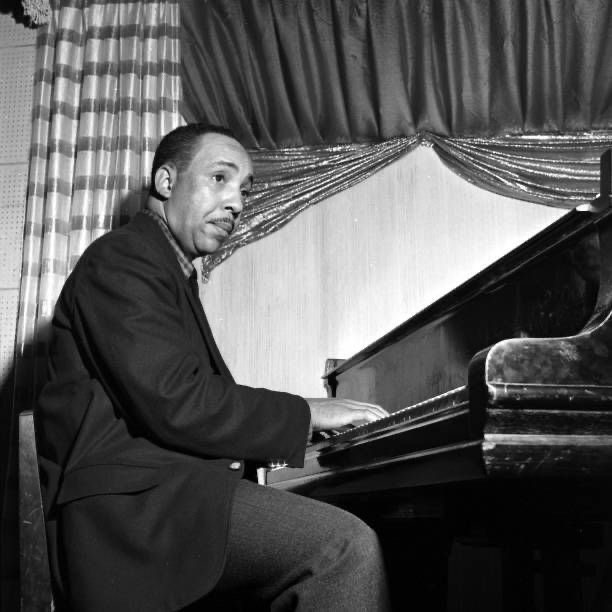Dive into the Power & Passion of ‘Tenor Madness
In the vast panorama of jazz, Sonny Rollins’ “Tenor…
In the annals of jazz, there are encounters that shake the world, creating art that transcends the moment. One such collision of creative forces occurred when altoist Art Pepper clashed with the prodigious Rhythm Section. Swinging, grooving, and burning, this gathering of formidable musicians birthed a timeless classic: “Art Pepper Meets the Rhythm Section.”

Let us explore the depths of this legendary album, delving into its creation and the artists who brought it to life. In 1957, the concept of uniting musicians who would not typically play together was revolutionary. Jazz was a living, breathing entity, and the interplay between its practitioners shaped its evolution. Art Pepper, a West Coast titan, and the Rhythm Section, Easterners who’d been honing their chops with the Miles Davis group, were brought together for a unique and provocative experiment.
The recording session was a baptism by fire, an unrehearsed communion of sound and spirit. As the musicians played the first chorus of “You’d Be So Nice to Come Home To,” the air crackled with electricity. Ideas flowed like water, and two new tunes, “Waltz Me Blues” and “Red Pepper Blues,” were conceived on the spot. In just five hours, an album was born – a testament to the power of spontaneity and uninhibited exploration.

Art Pepper, that cool cat from Gardena, California, had music coursing through his veins from the start. Driven by a passionate desire to study music, he began on the clarinet before transitioning to the alto sax. With idols like Benny Goodman, Artie Shaw, and Willie Smith, Pepper soaked up their influence like a sponge, eager to forge his own path in the world of jazz. Immersing himself in the vibrant scene of Central Avenue, young Art absorbed the essence of jazz, allowing it to permeate his soul. From after-hours clubs to stints with Gus Arnheim, Lee Young, Benny Carter, and Stan Kenton, Art’s journey shaped the artist he would become. Eventually, he recognized the importance of mastering musical fundamentals, a realization that only served to sharpen his natural talent.
The Rhythm Section, that powerhouse trio, was no mere backdrop for Art’s dazzling alto. Red Garland on piano, Paul Chambers on bass, and Philly Joe Jones on drums each brought their own individual flair to the table. Yet, it was their time with Miles Davis that forged them into a cohesive, pulsating unit. Jones, that tough Philadelphia-born drummer, swung hard and generated excitement while showing delicate control with brushes. Chambers, the young bass prodigy, was renowned for his bowed solos, driving the rhythm with his hard-swinging style. Garland, hailing from Dallas, brought his extensive experience and diverse background to the piano, adding further depth to the mix.

The recording session began under less-than-ideal circumstances. Art, in the dark about the session until that fateful morning, had been out of practice, his horn dried out and in disrepair. Despite the obstacles, the moment the music began, everything fell into place. Art, inspired by the Rhythm Section, tapped into the intuitive skills he’d honed during his formative years on Central Avenue, breathing life into the tracks with his raw, honest emotion.
The album’s tracks are a testament to the synergy between Art and the Rhythm Section. From the opening chords of “You’d Be So Nice to Come Home To” to the spontaneous creations of “Waltz Me Blues” and “Red Pepper Blues,” each tune captures the excitement of discovery and the thrill of pushing boundaries. The inclusion of the Dixieland classic “Jazz Me Blues” pays homage to Art’s early influences, showcasing his belief in the interconnectedness of jazz throughout its various eras.
With each listen, one can sense the electricity in the room, the musicians feeding off one another’s energy, creating an atmosphere of pure creativity. The solos are inspired, the interplay dynamic, and the rhythm section drives the music with unrelenting force. Tracks like “Straight Life” and “Bijou the Poodle” further illustrate the group’s ability to explore new territory while maintaining a solid foundation in the jazz tradition.
In the years since its release, “Art Pepper Meets the Rhythm Section” has remained a touchstone for musicians and fans alike. Its enduring appeal lies in its spontaneity, the sense of camaraderie and mutual respect among the musicians, and the unbridled expression of emotion. The album is a testament to the power of collaboration, reminding us that when creative minds come together, the possibilities are limitless.
As we reflect on this monumental album, let us not forget the lessons it teaches. The power of jazz lies not only in individual expression but also in the communion of spirits, the meeting of minds, and the merging of hearts. Whether listening to the album for the first time or revisiting it as an old friend, one cannot help but be moved by the passion, creativity, and sheer joy emanating from every note.
In conclusion, “Art Pepper Meets the Rhythm Section” is more than just a jazz album; it is a testament to the human spirit, the ability to overcome obstacles and create something extraordinary in the process. As listeners and lovers of jazz, we are privileged to bear witness to this unforgettable meeting, a moment in time when the stars aligned, and the magic was captured for all to hear.